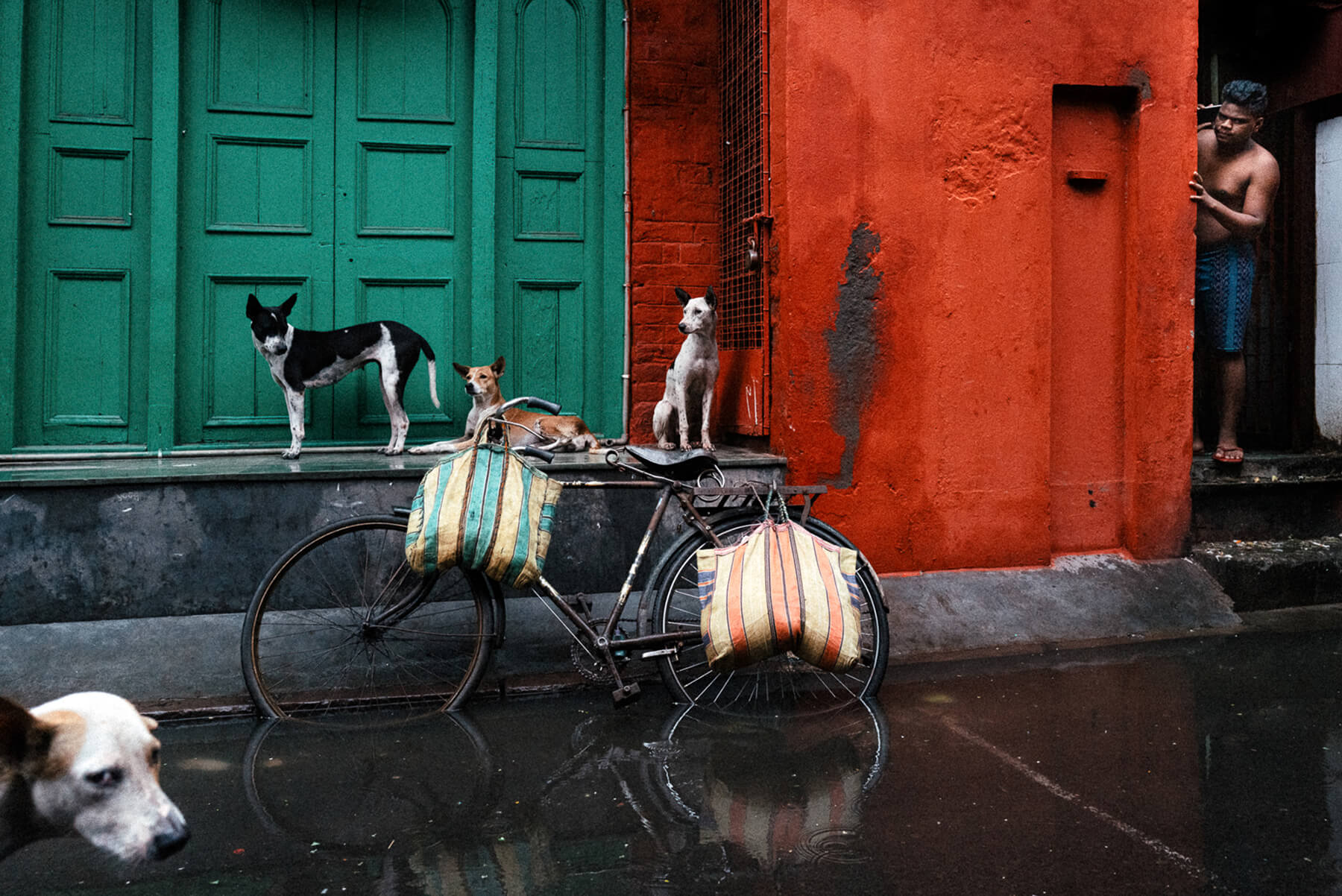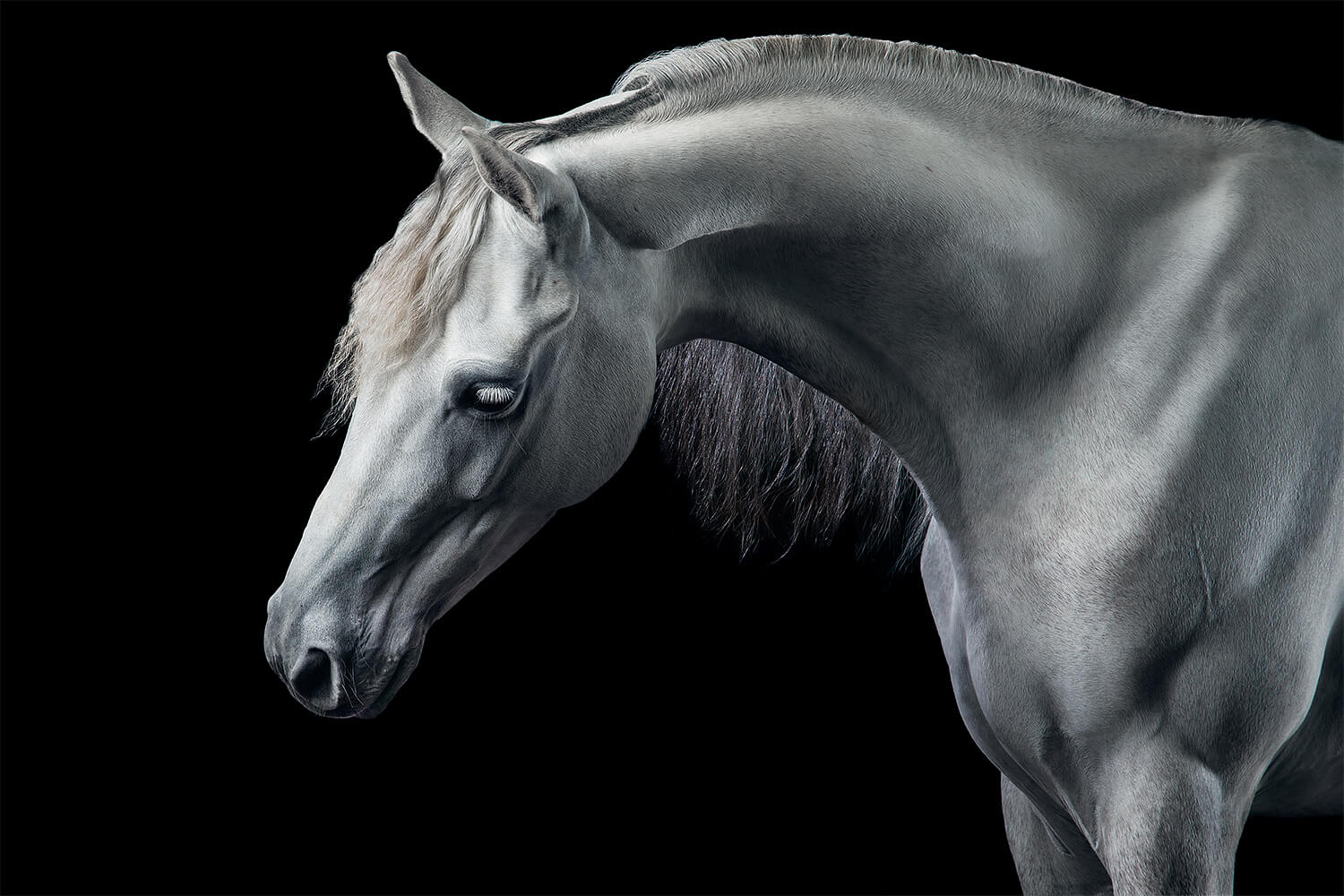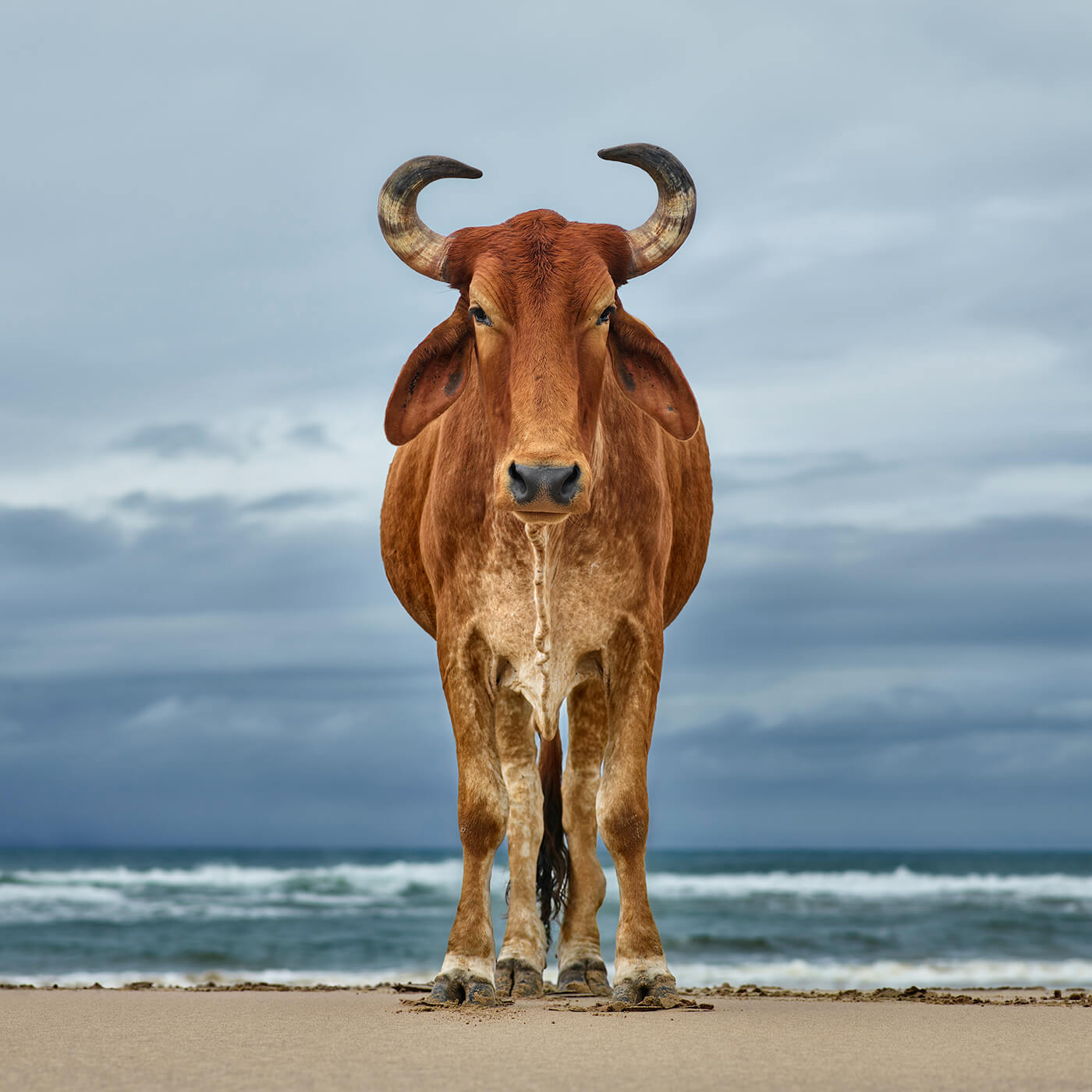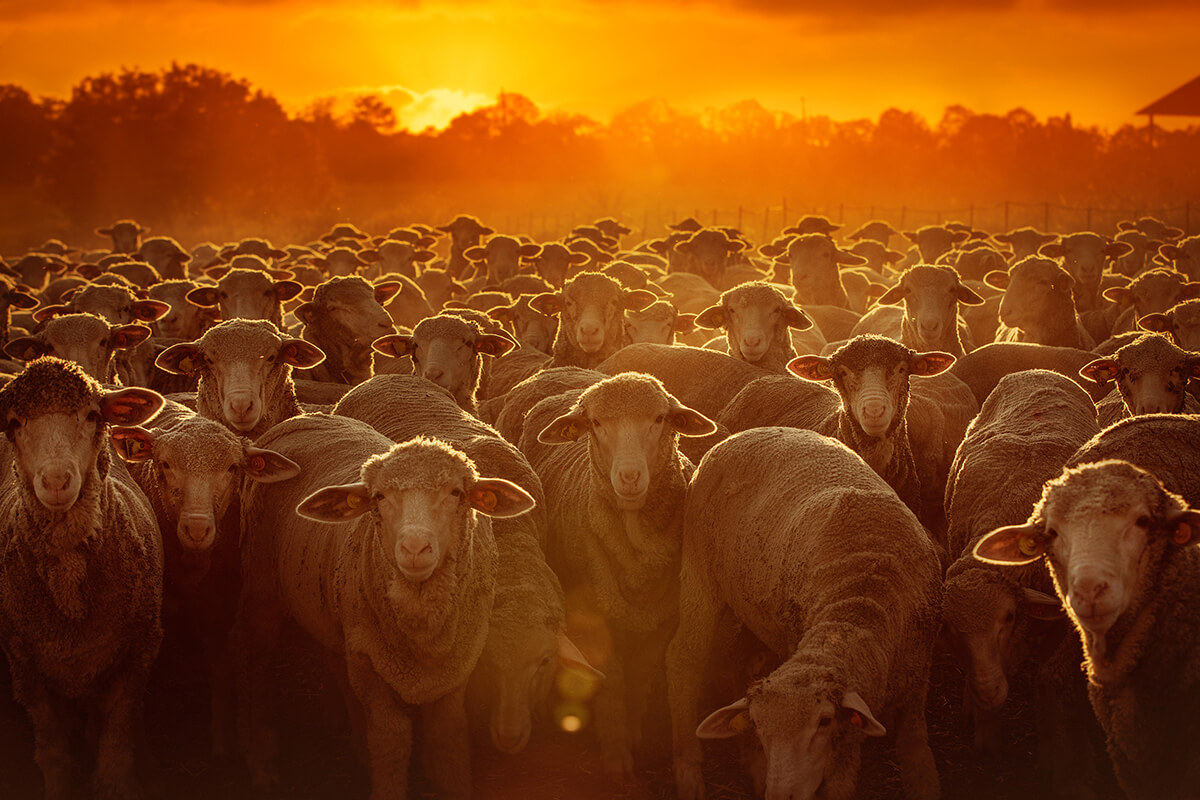INSPIRATION
My Favorite Shot
ANIMAL KINGDOM
What’s the favorite photo you’ve taken?
Could you pick a favorite image you’ve taken? Not easy we know, but to coincide with our February 2023 ANIMAL KINGDOM call for entries, we asked some of the photographers in our community to do just that. Or at least to pick a shot related to the topic that they hold dearly, were happy to have taken recently, has a great story behind it, or that resonates with them in some other way right now. Here they tell us why…
(Banner image: Vladimir Karamazov)

LIDIA CHAVINSKAIA
“This picture was the first one in my series of Cowscapes. Actually, I composed it first without any idea to make a series. I took a picture of the Holstein cow’s back with a beautiful pattern in the form of a flower. And a month later I was watching the sky and I saw a cloud with a similar form. I took a picture too. And when, once at home, I looked at the both pictures together, I imagined things in their union. Forms and graphics first. An illusion of a landscape second. A few months later I started working on a sociological project involving Holstein cows. Progressively a conceptualisation of the series came to me quite naturally: the picture I made can talk about the place of farm animals in our society. So I decided to keep going with this idea and to create other “cowscapes”. This photo is very symbolic for me in the sense it became the beginning of a long project: academic and artistic at the same time. It even illustrates the cover page of my book entitled “The Global Cow”, where the cloud is also symbolic of a huge technological setting including a (big) data hub and computing center which exists to manage world cattle breeding. I like when pictures live many lives.”

JONATHAN JASBERG
www.jonathanjasberg.com / @seat1aflyer
“As a street photographer, I love incorporating animals into my shots. They often make the scene much more dynamic, add visual interest, and provide more information about the place. This particular photo with dogs is my favorite from 2022, not only because of how the shot turned out but how fun it was to take.
This shot was made after torrential rains had flooded many of the streets in Kolkata, India, on a morning in September 2022. I was out walking the flooded streets taking photographs with my friend Shivam when I spotted this bicycle carrying bags that coincidentally matched the colors of the walls behind it. It’s fun coincidences like this that I love stumbling on. The issue was that we were walking on the sidewalk, and the street was lined with cars parked bumper to bumper on our side. Not only was the street flooded, but even if I wanted to wade out into the water to get close enough with my 28mm lens, I couldn’t since we were being blocked by cars. So I simply laid down flat between two cars, my body held up by the bumpers, and began photographing. I’m pretty tall and have long arms, so I was able to get my camera fairly close to the scene. Shivam happened to record the whole thing, with me laying on the bumpers of the cars just as the man whose bike it was leaves the scene. The video is posted in a set with this photo on my Instagram if you’d like to see the comical ‘behind the scenes’ making of this shot, and why it is my favorite.”

MICHAEL JEFFREY WILLE
www.michaeljeffreywille.com / @michaeljeffreywille
“This image is one of my favorites from my Morphology series as it was the first one I constructed that sort of caused me to begin thinking outside the photographic box I had isolated myself in; Eupholus Schoenherrii was my conceptual awakening. Before this I had focused purely on documentation of subjects; strict nature photography with no real concept behind it. With Morphology, and Eupholus Schoenherrii, I began exploring the idea of using color theory to influence how one would view these subjects in a controlled environment. I wanted to take subjects that normally evoke fear, or disgust in the average person, and reduce the concept to color and shape to simply catch the eye of a viewer. By doing so this invites the viewer to more closely inspect an animal they might otherwise have been repulsed by, and hopefully inspires them to walk away with a newfound respect for beings that deserve the same respect as any other living creature.”

WIEBKE HAAS
www.wiebke-haas.com / @spanishvision
“Marble is an image portraying the Tennessee Walking Horse “Royal Out Of The Blue“. Both the image itself and the animal’s name resemble what I love most about horses: their aesthetics and majestic grace. The light nestles on the soft yet distinct forms and lines of the horse’s body, which is enveloped by pure white fur. To let the “white” appear even more precious I added some light nuances of blue to the shades. That way the picture reminds me of a marble statue which dares the spectator to let their glance wander across the smooth outlines. Fine art photography is the essence of my work and Marble is an incarnating of that.”

VLADIMIR KARAMAZOV
www.karamazovphotography.com / @vkaramazovphotos
“I have always wanted to be in nature and stalk an animal for weeks to get the best shot. People still excite me more than animals, but the thought of wild animals entices me too. This photo was taken in The Camargue Reserve in France. I really wanted to photograph the flamingos because of their striking color. Is the color really that beautiful pink without additional processing? I had a flash on me and started shooting with it. When there is additional light the color of the birds is fantastic. Without light it is rather dirty white. Great images can be taken of animals at the zoo, in parks and even in urban environments. It’s the idea and the desire that’s important.”

KAROLIINA KASE
www.karoliinakase.com / @karoliinakase
“Volunteer doing physiotherapy with an injured animal.
When I started volunteering at the sanctuary, I took over the care of animals with special needs, including Tilly. Tilly is a female kangaroo who was brought to the wildlife sanctuary after she was found immobile next to a road. Presumably, she jumped a fence on top of a hill, but fell and rolled down. Upon arrival to the sanctuary, she could not stand. In her pouch was a dead joey, who had perished upon impact. Following the accident, Tilly was living indoors on a mattress. She had a lot of character and I saw potential for recovery. After X-ray scans and meeting with a vet, Tilly and I started doing assisted exercises to get her back on feet. I used fresh grass as motivation, since exercising a wild animal can be difficult–Tilly was often grumpy, uncooperative, and sometimes scratched me. Nevertheless we persisted and I saw some progress before leaving the sanctuary.
I visited the sanctuary a year after working there and thanks to determined and caring volunteers Tilly was back on her feet and able to jump around. She was now living outdoors with other kangaroos. Unfortunately, most animals like Tilly are left dying next to a road or put down. Overwhelmed and overworked wildlife carers rarely have the space or time to rehabilitate adult animals. Yet, Tilly’s case proves that with effort and care, animals can potentially recover from the damage humans have caused.”

SARAH MALAKOFF
www.sarahmalakoff.com / @smalakoff
“This photo is from a project called “Second Nature” where the home is seen as both a refuge from and at times a re-creation of the outside world. I looked for homes with representations of nature and pets worked their way into many images. It was a technical challenge because I was shooting large format film with very long exposures and animals were not sitting still for the 5-20 minutes I needed. I began compositing the long exposure without them and a shorter, shallower depth of field exposure of them in the space. I don’t often photograph in my own home, but this fur wall seemed perfect and my beloved cat, Floyd, was a perfect model. He had an amazing sleeping position (we called the super-dude) with all four legs splayed out. I got him comfortable and set out to do my regular procedure, but he just didn’t move. I decided to go for the long exposure in one shot and he ended up sleeping soundly and still for 8 minutes. I love this photo for a bunch of formal reasons and for the strange juxtapositions, but it is also quite a personal picture with great memories of its making.”

MAARTJE ROOS
www.roosphotography.nl / @maartjeroos
“Lotje from the series Cultural Living Heritage ‘The Last of Their Kind’. A series about endangered breeds.
This is Lotje. Lotje is a young lady of two and pregnant for the first time. She stands as an ode to all her breed mates; the Frisian-Zeeuws milk sheep, a breed that is close to extinct in the Netherlands with only around 450 remaining. Lotje was eventually my third model, because I was not completely satisfied with the first two. And even then was not easy to photograph. The ffrst attempt was between her friends outside but she didn’t feel like it then. Then we went alone with her and her owner to her stall. Things went better there. With a Profoto flash I was able to illuminate her nicely and she ended up smiling. So I was very happy with that!
It’s a composite image. That’s how I work. I photograph every detail, compose and edit everything myself. In the background two different provinces of the Netherlands can be recognized. Zeeland and Friesland. That is where the breed originally came from. I had already scouted locations and when there was snow (which is rare in the Netherlands these days) I drove to each province – one on the other side of the Netherlands to the other. I was very happy with the fog on the landscape and in the sky which I could use well, creating something a bit softer and more mysterious. And when I had photographed all the elements, I spend days in Photoshop making a beautiful image out of them. In the end, months after the first idea, it’s very rewarding when it all comes together nicely.”

TRAVIS PATENAUDE
www.stinkeyephotography.com / @stinkeye_photography
** Trigger warning – Travis’ text describes acts of animal cruelty that some readers may find disturbing **
“Known as Galgueros, Spanish hunters that use dogs (Galgos) to hunt hares, dispose of the Galgos at the end of hunting season in the most horrific ways imaginable… hung from trees, thrown into wells, starved, beaten to death, or abandoned. It is estimated that 100,000 Galgos are killed every year. If merely abandoned, they are purposely hobbled so that they cannot physically return to the hunter or hunt hare on their own to survive.
In certain parts of Spain, laws were passed to allow the hunters to shoot stray dogs. The Galgueros would cut out the microchip from the dog’s neck and then release the dog to only shoot it, claiming it to be a stray. The Galgueros call themselves the true Galgo Lovers but protect the hares from being hunted by all the stray Galgos they have dumped.
So the question of this photo is: Who do you prize more, the Galgo or the hare?”

MARTINA ALICE TOLOTTI
www.martinaalicetolotti.com / @_materica
“When I shot this image I was mesmerized by the striking contrast between all the elements I was suddenly in front of. Feeling close to the presence of animals has always felt somewhat sacral for me. The only option to get the shot was to move very slow, staying in the car. I gave exact instruction to my dear friend at the wheel to allow me to get the composition exactly as I wanted from the car windows. The main task was to not scare the animals. Riding the car at its slowest, I felt like a predator myself. The vehicle movement slightly alerted them but not enough to scare them away, and that created the relationship between them and the camera that I was looking for.
By documenting the uncanny presence of wild animals in an industrial complex in South Africa we observe one of many curious examples where man’s relationship with nature’s oldest continent has changed as a result of industrialization. The absence of human figures in the image may, however, suggest a dystopian mirrored scenario: one in which the animals are not being studied by a team of researchers as endangered species as actually happens in the present, but instead claiming possession of our industrial archaeologies – feeding themselves on the detritus of our failures as a society that has caused the depletion of the original and unique “territorial glory”. A landscape that describes a détournement process shows us the contradictions of the capitalist model in the Cape Town Provinces.”

ALEX DOUBLE
“The Boiler was always a place where normally we would expect to see many giant Pacific mantas circling the massive volcanic rocks of the reef rising up from the sea bed from 50 or 60 metres. However, this day was not going to be that day. The wind and sea conditions contrived to be too intimidating and dangerous for us to take the risk of diving those inviting twin towers so a change of plan was made. We sought the more sheltered site called the Zoo some 6 or 7 hundred metres along the rocky coast from the Boiler. We were just five divers and we landed on a black volcanic sand slope between two outcrops of reefs that bordered the sand slope down into very deep water. The visibility was somewhat below what we were used to due to the turbulence of the sea on the surface. At first there was little life so we let ourselves drift along in the current at around 25 metres.
The others were a little ahead of me and I was taking my time setting up my camera hoping to see some of the major fish life that the area was famous for. I looked round in the direction of where we had dropped in and there in the gloom was the unmistakable shape of two pacific mantas, one a medium sized chevron manta and the other a truly huge melanistic manta, at least 5 metres from wing tip to wing tip, swimming slowly just a metre or so above the sand. What is more it was coming almost straight at me and I hoped that it would pass me closely by! What a wonderful chance to photograph this magnificent animal so close to me, It was a wonderful never-to-be-forgotten moment as I pushed the shutter button to record its calm majestic serenity as it “ flew” slowly by.”

DANIEL NAUDÉ
www.danielnaude.com / @daniel_naude
“Xhosa bull on the shore, Eastern Cape, South Africa, 12 April 2018, from The Bovine Prophecy Project – Xhosa cattle on the shore of the Eastern Cape.
When approaching a captivating subject, I have an overwhelming desire to compose the animal in the landscape to near perfection. Matching or juxtaposing the subject’s expression in relation to the landscape or graphically balancing or unbalancing the colors, shapes and expressions inside of the frame. Portraying animals is 90% luck. The remaining 10% is the challenging part, being there at the precise moment and taking the perfect shot. These experiences can become very intense, and remain for many years in one’s memory.
While I was photographing the cows on the shore, this strange, tall, majestic bull approached from the green hills behind me. His stately stride was so captivating as he joined the herd, I just knew I had to capture this animal. Personally, a satisfying result is seeing all four legs, the hanging tail in the background, and both ears in similar position fading into the body. Furthermore, the unforgotten last minor left and right tweaks of the camera’s placement in the palm of my hand before I click the shutter or the animal moves from its desirable position. Moments like these are what fuels my way of working.
The middle positioned facial expression of the bull gazing into the lens is a mesmerizing sight and the softness of the white spots on its dewlap leading up to its medieval-looking, curling-in horns contrast with the calm sky in the background. His vivid orange-brown coat stands apart from the color of the clouds and colder tones of the ocean, and blends into the white abstracted and un-disturbed sand in the foreground, contributed to the stillness of the moment. My low perspective enhances the powerful presence of this animal, giving it a more superior feel elevated above the ocean and horizon line in the distant background.
My satisfaction in my work comes from the fact that these still moments are not manipulated digitally, but real.”
